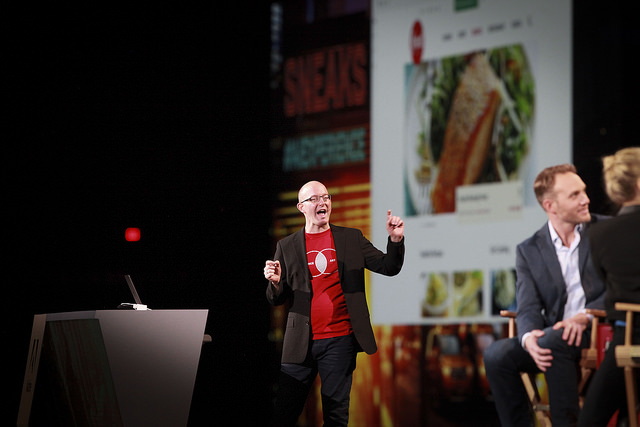
Engaging customers in this environment requires unprecedented amounts of content—a dynamic called content velocity. It’s a challenge for every business, but especially for brands with a large, diverse audience. Creating personalized content at scale is essential.
That’s why Cedric Huesler, director of experience management at Adobe, created #AIExperience—a technology he showed at Sneaks during Adobe Summit that takes advantage of Adobe Experience Manager’s asset management and Adobe Sensei to intelligently and automatically generate beautifully designed, engaging and personalized content layouts.
https://www.youtube.com/embed/z9m-3onnzMQ
How does it work?
First you need a considerable content library—a few thousand, curated and meta-tagged digital assets including text, images and video.
Next, you need analytics data and an understanding of which content has been read, shared or successfully generated an expected response. “Ideally it’s content that’s actively used, so you’ve gathered meaningful analytics around which content performs best with your different audiences,” Cedric elaborates.
With content assets and analytics data in place, Adobe Sensei is applied to understand the context of the content, using artificial intelligence and natural language processing to:
- Analyze the copy and imagery in your digital asset library
- Consider the analytics and user behavior previously generated by that content
- Automatically create new targeted experiences that are unique for each audience segment
- Deliver each experience in a design layout across multiple content channels—such as a website, mobile app or newsletter
“Automatically creating a layout that looks nice is one of the more challenging parts of #AIExperience,” Cedric explains. “We use a grid layout, style sheets, and some basic design guidelines along with multiple algorithms our research teams have developed to create a clean, balanced layout with appropriate emphasis and information hierarchy.
Most importantly for brands with a large, diverse audience, #AIExperience works at scale. At Sneaks, Cedric used a simple, three-step interface to create hundreds of content designs—each uniquely created for a targeted audience segment, a specific business objective, and a unique channel for delivery—in a matter of seconds.
What’s next for #AIExperience?
“I want to solve the hard problems. I’ve been a product manager for content management systems for 13 years, and it’s amazing to me how much is rapidly evolving and changing in this space,” Cedric notes. “So, one of the things I’d like to do is broaden the types of layout experiences we can generate. Today, it works great for decision-point experiences that we see in commerce, or category experiences where we generate variations on a theme such as food recipes. But, I’m interested in expanding it to include other experiences like product descriptions or story-focused editorial layouts that would be useful for a media company. That’s one of the great things about working at Adobe—being able to collaborate across incredible research teams and product teams to tackle these sorts of broad initiatives.”
This story is part of a series that will give you a closer look at the people and technology that were showcased as part of Adobe Sneaks. Watch other Sneaks from this year’s Summit here and read other Peek Behind the Sneaks stories here.
